Water heaters in the bathroom: types, how to choose and hide?
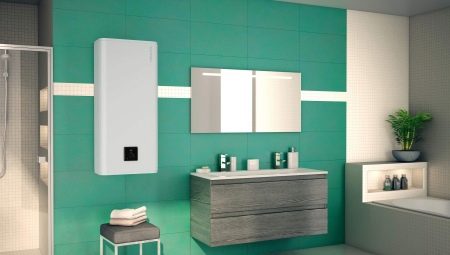
The water heater eliminates the inconvenience associated with interruptions in hot water in apartment buildings, especially on the upper floors, where it is not always available. If you live on the 25th floor, then more often than your neighbors below you will face a lack of hot water. At the dacha, where there is often no central heating and hot water, the heater will adjust both.
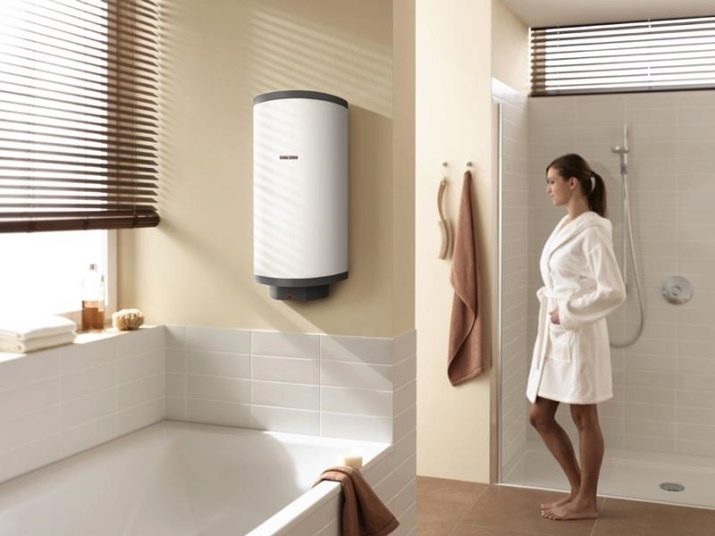
Peculiarities
The purpose of the water heater is to bring the water to a temperature comfortable for taking a shower or washing dishes. In some cases, it is also used for hand washing laundry. A water heater in a bathroom looks like an installation in the form of a cylinder or a hanging box, connected to electricity and water supply systems. In the first case, it is a water heating boiler in the form of a boiler, in the second - a column or a compact heater.
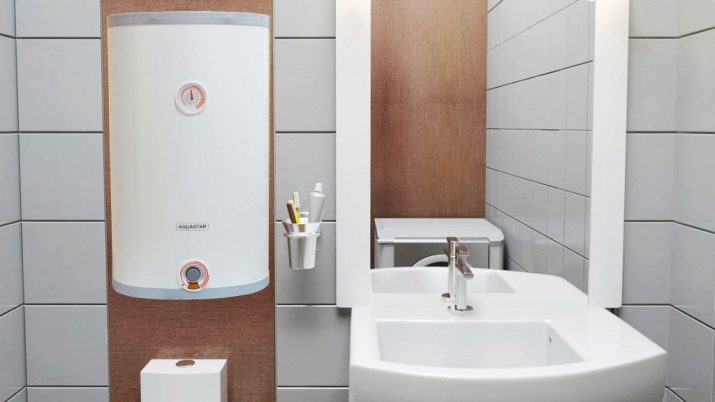
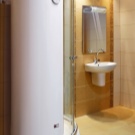

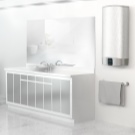
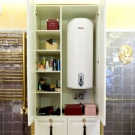
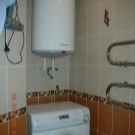
To protect against heat loss, the internal tank of the device with electric heating elements is placed in an external container. The entire structure is thermally insulated. As a heat insulator, a high-temperature and very lightweight porous material is used, such as that used, for example, in sandwich chimneys.
Species overview
Types of water heaters.
- Gas water heater (boiler) - heats water much faster than its electric counterparts. Costs for gas are several times less than for electricity - gas as an energy carrier is more "high-calorie" in comparison with heat release on nichrome spirals of heating elements. Maintenance of this installation is also inexpensive.But the low cost of operation is not offset by the cost of installing a chimney, registering and coordinating the entire system with local fire and gas inspectorates.
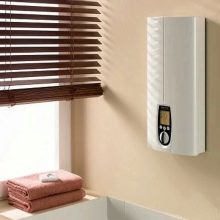

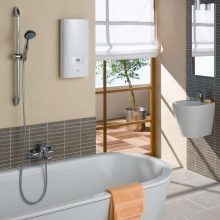
- Wood fired boiler - a device that does not need a connection to the gas supply system. Solid fuel boilers and stoves are much cheaper than their gas counterparts, as they are simpler and often lack a complex electronic control system and sensors. The disadvantage is the need for firewood or combustible household waste.
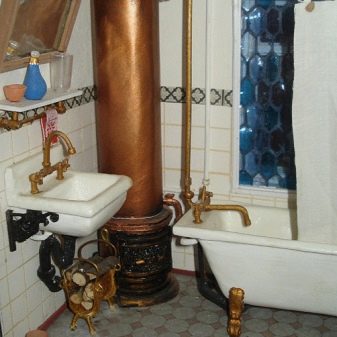

- Electric heating boiler devoid of costly procedures associated with the arrangement and ventilation of a gas boiler. All that is required here is a high-power and reliable line coming from the electrical panel in the house or apartment, and the presence of a ready-made connection to the water supply. The disadvantage is frequent maintenance (at least once every six months), which requires cleaning the heating element and water passages from scale formed in heated water (precipitation of minerals dissolved in water).
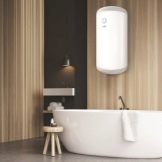
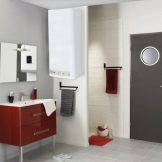
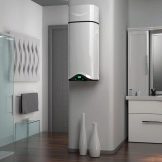
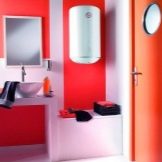
- Modern portable electric heaters - crane (in the form of a nozzle) shower models, including heaters in the form of small tanks. One of them needs a water pressure (at least 0.5 atmosphere), others can work without pressure: water flows out of the expansion tank or the pressure is so weak that water barely fills the entire heating coil.
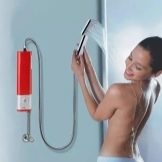

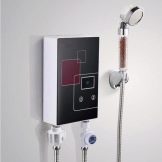
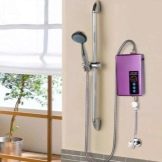
Flowing
Instantaneous water heaters include all types of water heating devices that require a constant source of water passing through the coil (loop). These include tank and packaged heaters, that is, full-fledged suspended boilers. They are divided into pressure and non-pressure. They will not work without a water supply. Their advantage is access to hot water in a maximum of half a minute. The disadvantage is that not all wiring, especially old ones, will draw out their power of 3-10 kilowatts.
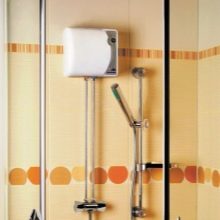


Cumulative
Capacitive (storage) water heaters are barrel-type devices. The main condition for their work is the filling of the inner barrel up to the upper level. A float-type level gauge with a sensor giving a command to turn on the heater is responsible for this. As soon as water starts to leave the barrel, the level drops, and the sensor immediately turns off the heating. To prevent the water from overheating, the thermostat turns off the heating when the set temperature is reached. The pressure for such a heater is not always required. Its advantage is efficiency: the device is not more powerful than a washing machine or an electric kettle (up to 2 kW).
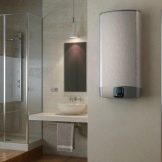
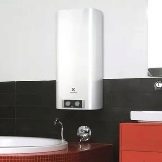
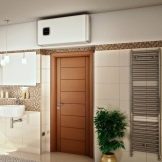
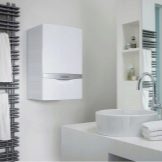
The disadvantage is its heavy weight (40 or more kilograms for a full tank), so it is not suitable for installation on a wall made of porous materials, for example, aerated concrete.
Connection types
The gas boiler is connected to the gas pipeline on which the meter is installed. Electricity is required only for those gas models that have electromechanical or electronic control... In this case, a separate line with a socket or terminal block must be connected next to the gas pipeline. The supply of cold and the outlet of heated water is carried out through separate choke pipelines, to which the coil of the water circuit is connected.
The input of such a circuit is connected to the house or apartment pipeline from the city water supply system or from the pump of the country well. From the outlet, heated water enters the bath shower and kitchen faucets.


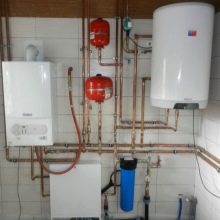
An electric flow-through boiler will need not just a separate socket, but a grounded euro socket with a cable, the wire cross-section of which is designed for at least several kilowatts. The water connection is the same as for a gas boiler. The same connection diagram for the tank heater. With a storage boiler, the cold water inlet and hot water outlet are located in a similar way, regardless of whether it is pressure-driven or not. If there is a separate circuit and a heating unit for heating, then the number of connection pipes is doubled.
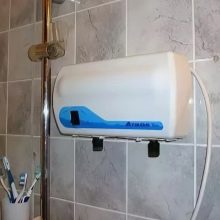
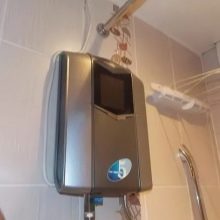
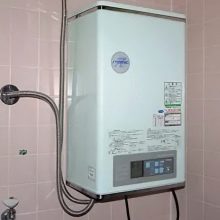
Portable water electric heaters have the only difference from flow-through boilers: in the case of a tap attachment, they are not always permanently installed. They can be transferred to the bathroom or kitchen, and even used in hotels where there is no hot water supply at all or temporarily suspended. Some models are equipped with adapters for a shower spray and a faucet drain pipe.
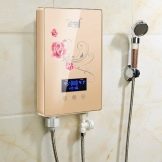
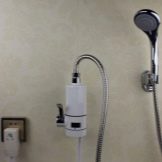
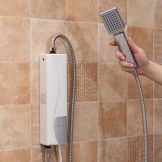
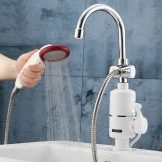
Installation options
A wall-mounted column or a tank-type boiler is suspended from a brick or concrete wall. The strength of the wall must be sufficient to withstand a load in this place of up to 100 kg... If, nevertheless, an aerated concrete wall is used, then it is suitable for instantaneous water heaters, provided that instead of anchors, studs with large (from several centimeters in diameter) washers are used, passed through through holes. Hanging a massive boiler on an aerated concrete wall is a risky step.
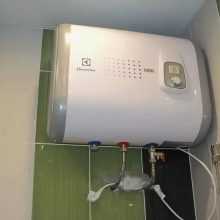
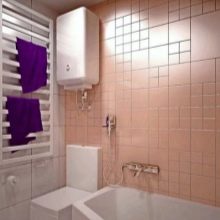
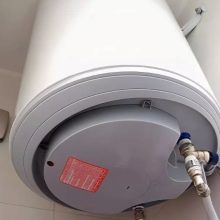
The fact is that the loose structure of the foam block under the studs, which bear the weight of a full tank, can sag, fold inward, and a piece of the wall in this place will fall out together with the heater.
For large boilers, a steel riser is the best option. It is assembled from pipes, angles and / or profiles, while the thickness of the steel supports must be sufficient to support the weight of the filled boiler or boiler. For maximum safety, the entire structure is located in the corner. A small capacity tank type water heater (up to 30 liters) can be hung on any wall. The above recommendations are taken into account depending on the wall material.

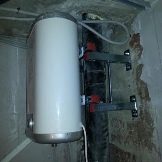
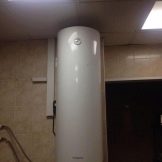
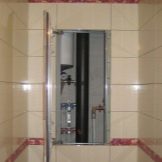
Tank type flow-through electric heaters with a small reservoir (from one to several liters) are suspended anywhere without a particularly reinforced fastening, or they are installed in a cabinet. Their mass, even when filled, is up to several kilograms.
Pressure water heaters of all configurations can even be installed on the floor - the water pressure will deliver water to any height in the room, and the pump on the well will raise it to the required level. In the case of the water supply, the pressure heater will not work only when you live on one of the last floors, and from time to time the water from the tap flows in a thin stream.
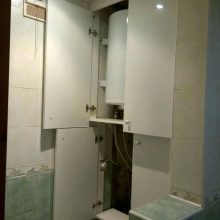
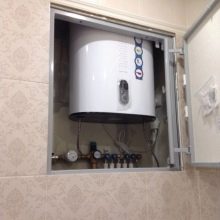
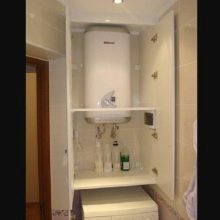
How to choose?
Suitable heaters are selected based on a number of parameters.
- Moisture protection class. It is marked in the IP-xx format. The first number determines the level of protection against the penetration of objects and particles (in descending order of their size), the second - against moisture (from leakage to a jet) on the electrics (and electronics, if present).
- Tank material - enameled steel or stainless steel. You can find out only in the instructions for the product, or by disassembling it, which will cause a violation of the warranty seal inside the case.
- Tank shape - flattened, cylindrical or parallelepiped.
- Tank volume or throughput... The specific displacement is able to determine how many people can comfortably use the heater. For capacitive heaters, the displacement varies from 15 to 100 liters. For flowing ones - liters of water per minute: from 3 to 10.
- Heater type - open (immersed in water) or closed (isolated). The first one needs to be periodically descaled.
- Mode of operation - for kitchen, bathroom and heating. The last option is a combined boiler, divided into two independent blocks in one body.
- Installation features - floor or suspended.
- Management - electromechanical (without a remote control) or electronic (from the remote control or from the button panel on the front of the product).
- Dimensions (edit) - flow heaters are mostly compact.
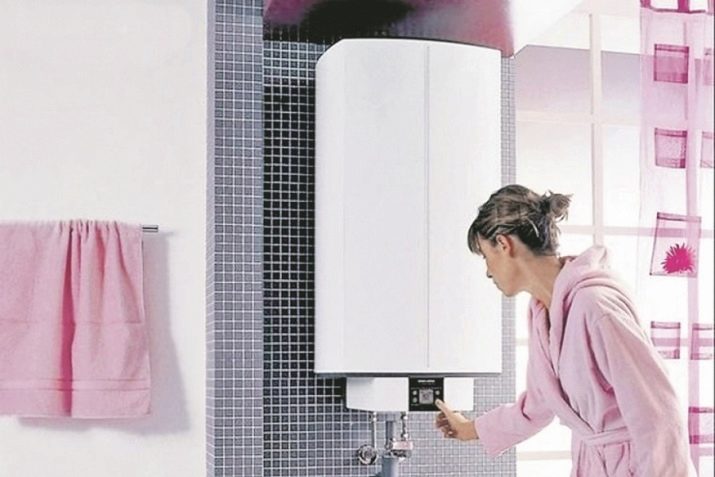
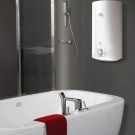

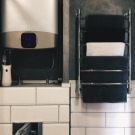

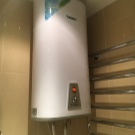
Having decided on what kind of heater you need, choose the product finally - for the price.
How to place?
If the heater is small in size and from several kilograms, it can be placed in a hanging cabinet. The heavier model requires a base cabinet, which does not need a wall suspension.Such an installation will hide the heater or boiler from the sight of guests. Only small ones, weighing up to 30 kg, can be hung from the capacitive heaters. It is recommended not to hang medium and large ones, but to put them on the floor or on a reliable support. In any case, the boiler or heater must be installed correctly, observing all regulations and rules for the prevention of accidents, which include the following situations.
- Electricity problems. Whether it's a short circuit in the wiring, a failure of a heating element or a control board, the current should not pass through the water, otherwise it will immediately kill a person taking a shower or a bath. For additional protection against electric shock, a residual current device is installed in the line suitable for the bathroom. Upon detecting a small leakage current, it will immediately disconnect the mains voltage. But reliable grounding comes first.
- Accidental fall - possibly on the person who came to wash (if the boiler is suspended above the washbasin). There should also be no equipment or furniture under the heater.
- Possibility of fire due to overheating or short circuit. There should be no flammable objects and materials in the bathroom next to the boiler - plastic containers and other bath accessories, wooden cabinets. Reinforced-plastic pipes should be as far away from electrical wires as possible. It is recommended to use a non-flammable cable in the bathroom.

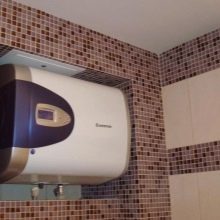
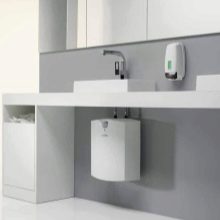
The design of the bathroom is most often sustained in light colors, close to white. The vast majority of boilers and heaters are white.
Examples in the interior
While white boilers and heaters are suitable for bathrooms and kitchens predominantly in light colors, for a bright interior, users often use a mirror-black solution. A boiler with a stainless steel body is a prime example of this.
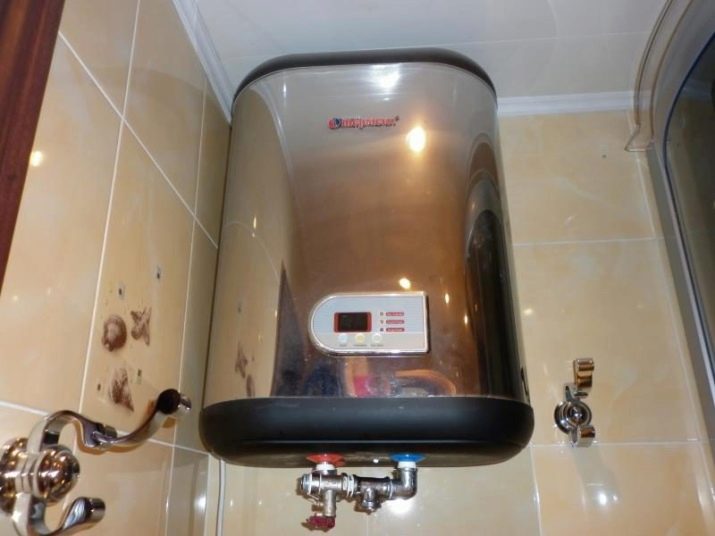
White tiles with patterns go well with a white heater or boiler, the upper and lower ends of which are painted in the color prevailing in the patterns on the tiles. But any other scale will do here.
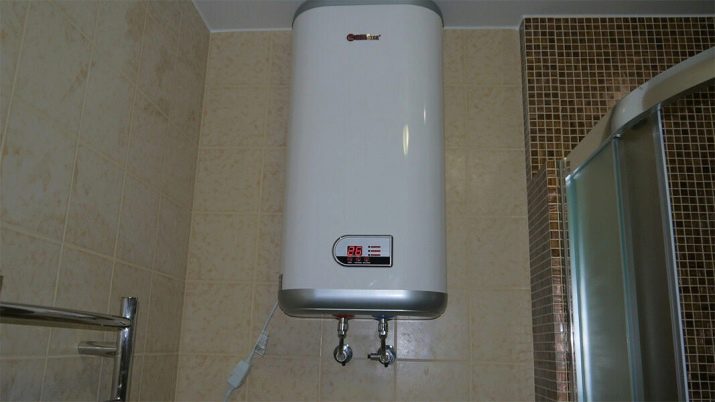
If the heater is hidden in a base cabinet or the boiler is placed in a bath cabinet, the color of the product body does not matter. The drawer or cabinet itself, in which the product is hidden, is matched to a tone that sharply contrasts or matches the color of the bathtub and the tiles in it.

For information on how to properly install a water heater in the bathroom, see the next video.








